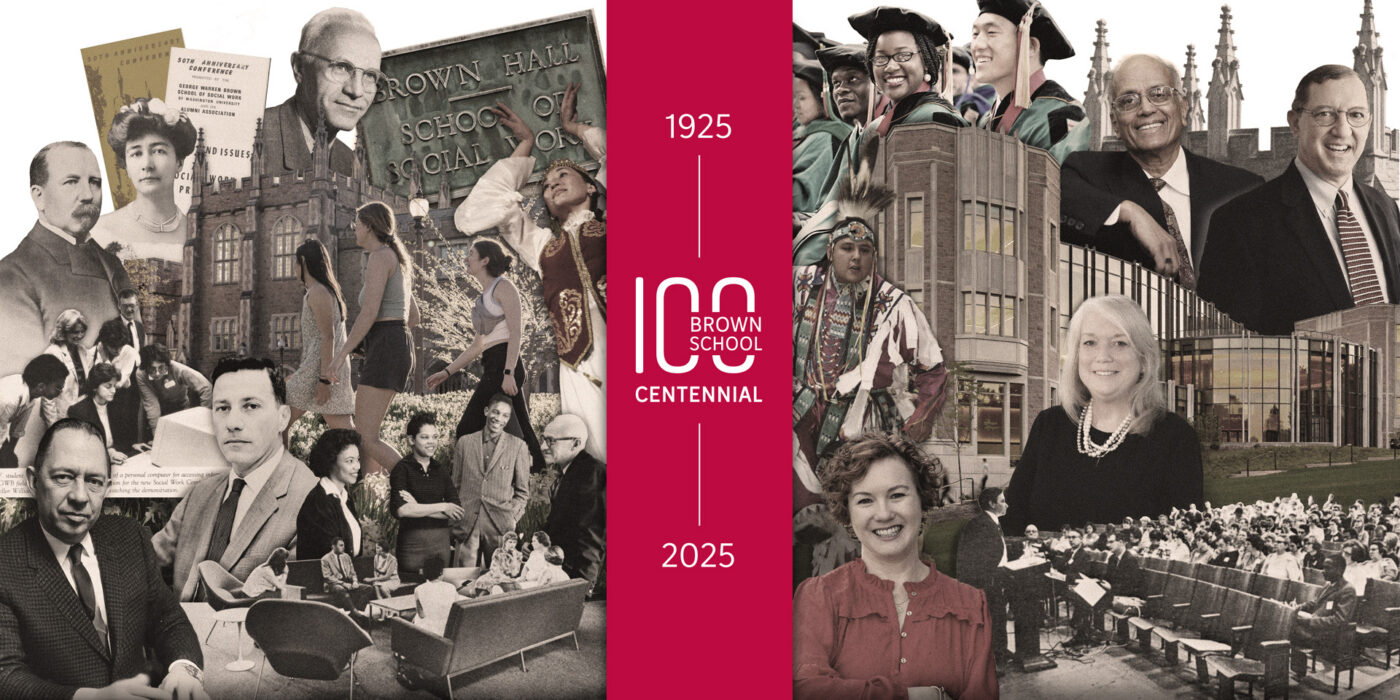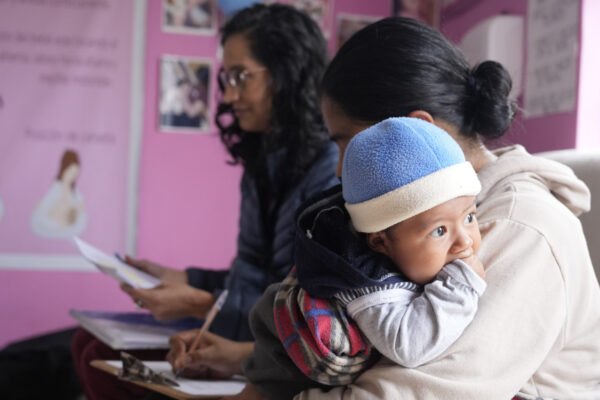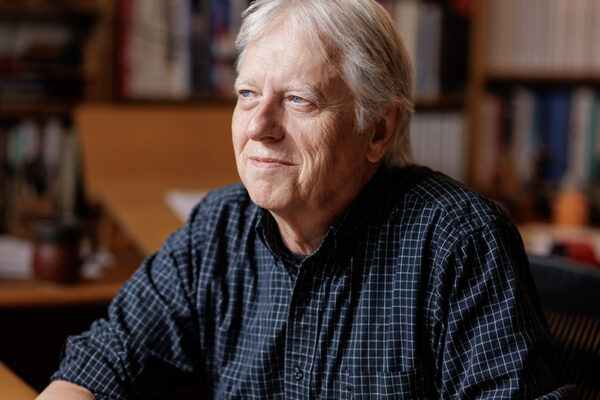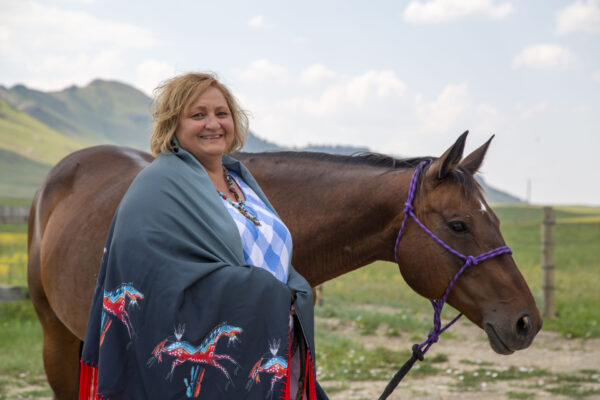In 1925, the world looked vastly different. Still, one constant has remained: The Brown School at Washington University has spent a century addressing society’s most pressing challenges, earning its place as one of the nation’s leading social work institutions.
“The enormity of our impact cannot be overstated,” says Dorian Traube, the Neidorff Family and Centene Corporation Dean of the Brown School and a professor. “For 100 years, our graduates have left an indelible mark on communities around the world. What the Brown School does, the rest of the field of social work tends to follow.”
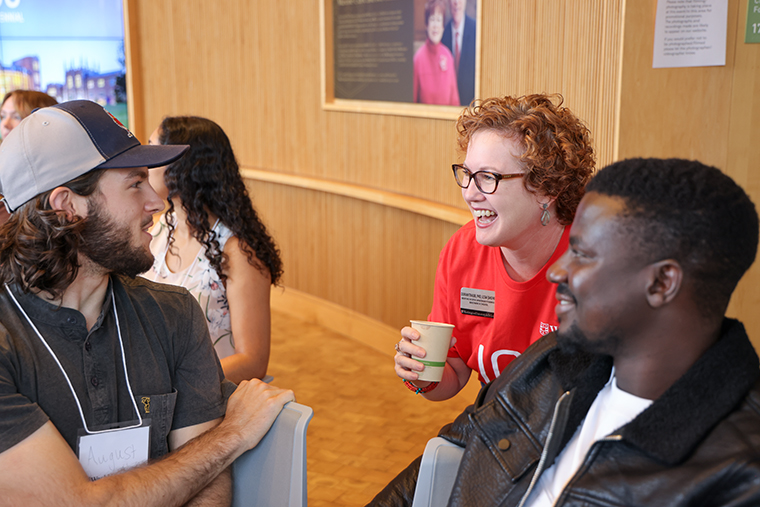
Since its founding, the Brown School has led efforts to address poverty, education reform, social equity, child maltreatment, mental health and health-care access. In recent years, U.S. News & World Report consistently ranks the Brown School among the top social work schools in the country.
“What has sustained the Brown School’s position at the top of the rankings — and what continues to maintain it there — is the fact that we have the best faculty and the best students, and there is reciprocity there,” Traube says. “Students come to the Brown School because they want to learn from leaders. They want to see the people that are making these amazing, innovative changes. And faculty come here because they want to be able to be in the classroom with the best and the brightest.”
Modest beginnings, bold vision
The Brown School’s story began well before its official founding, tracing its roots to 1860 with the St. Louis Provident Association’s mission to address social needs through “corrective charity.” By 1903, this effort evolved into the St. Louis School of Philanthropy, the fourth social work school in the nation. Over the next two decades, the program faced shifting institutional affiliations, funding obstacles and changing societal priorities before officially finding its permanent home at WashU in 1925.
The early days were modest: WashU’s “Training Course for Social Workers” began in the fall of 1925, initially as part of Arts & Sciences. Tuition was $25 per year or $5 per course for part-time students. The program focused solely on coursework, offering 11 classes. By 1927, it was housed in the School of Commerce and Finance, later to become the School of Business and Public Administration, with three focus areas: general casework, medical social work and recreational social work. The first bachelor’s degree was awarded in 1926, and the first master’s degree in 1927.
Transformative gift
In 1928, the trajectory of social work at WashU changed with a transformative gift from Betty Hood Bofinger Brown, widow of Brown Shoe founder George Warren Brown. She endowed the program with over $500,000. The gift came with one request: that the Department of Social Work be named for her husband. This funding allowed the program to expand its curriculum to 15 courses, enabling it to respond to the national demand for social workers following the onset of the Great Depression in October 1929.
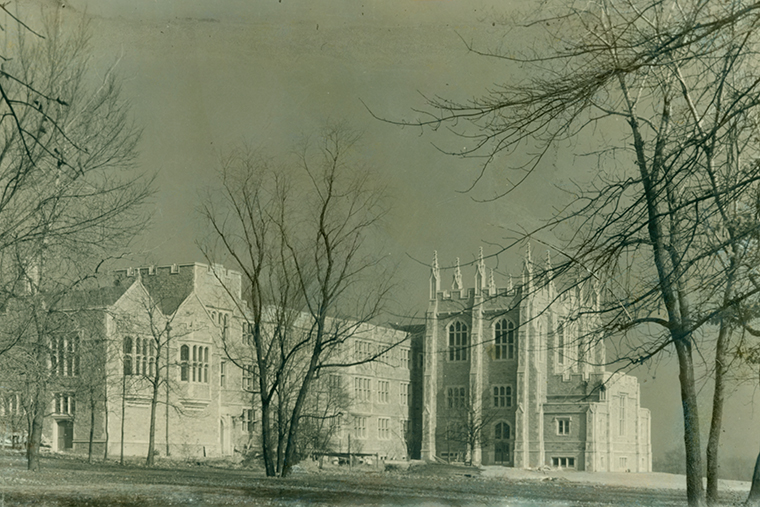
The impact of Bofinger Brown’s philanthropy deepened after her passing in 1934, as she left a significant bequest to the George Warren Brown Department of Social Work, enabling significant expansion and paving the way for the department’s evolution into a standalone school. Her will included a few requirements: The university had to start constructing a new building for the department within a year; the remainder of her bequest had to be used as an endowment for the department only, not for the university; and a room had to be set aside for social gatherings.
In 1937, Brown Hall was dedicated as the nation’s first building in the United States erected solely for social work education. In 1945, the George Warren Brown Department of Social Work severed ties with the School of Business, and the George Warren Brown School of Social Work was established. Tuition in 1945-46 was $240 per year.
Breaking barriers, leading change
The Brown School’s commitment to social justice took a historic step in 1948 when it became the first school at WashU to admit Black students, following a vigorous campaign by then-Dean Benjamin Youngdahl. By the fall of 1949, eight Black graduate students were enrolled, marking a pivotal moment in the school’s history. They were Clastine Alexander, Leona Evans, Ruth C. Greene, Lily Holland, Mary McClain, Clara Allen Matory, Labrtha Reddick and Fredda Witherspoon.
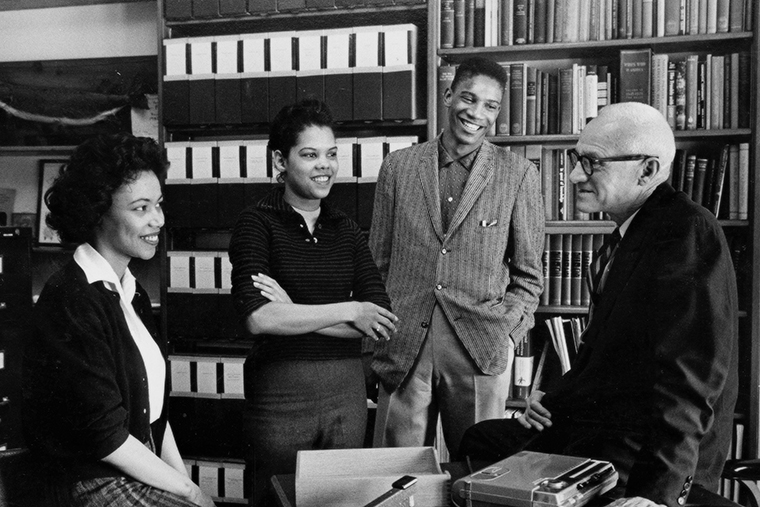
Ruth Green Richardson, who earned her MSW in 1950, recalls her experience: “I was one of the first Black students at Washington University, and yet I felt welcome there,” she says. “Maybe because it was graduate school or because this was social work.”
The school also made LGBTQ+ history in 2014 when Brown School student Lilly Leyh, and alum Sadie Pierce, MSW ’14, became the first same-sex couple legally married in Missouri. Anna Goldfarb Shabsin, a teaching professor at the Brown School, officiated the ceremony under the iconic Brookings Hall archway.
Innovating for the future
Throughout its history, the Brown School has been a hub for innovation. In 1967, it partnered with Saint Louis University to offer the first course in international social work. In 1969, the doctor of social work program was converted into a PhD program.
In 1970, it introduced the country’s first joint-degree program between law and social work. By 1975, the Brown School awarded its 2,000th master of social work (MSW) degree. During this period, the school also introduced a part-time option and the innovative 3-2 Program, allowing qualified undergraduates to enter the MSW program after their junior year.
September 1971 saw the largest first-year class in the school’s history, with 150 MSW students, 30 of them Black. In other good news, students would enjoy an air-conditioned Brown Lounge and Library, as well as a new videotape center.
The 1980s brought rapid growth, including the awarding of its 100th doctorate, a surge in faculty-authored books, and the opening of a new social work computing facility, adjacent to the library.
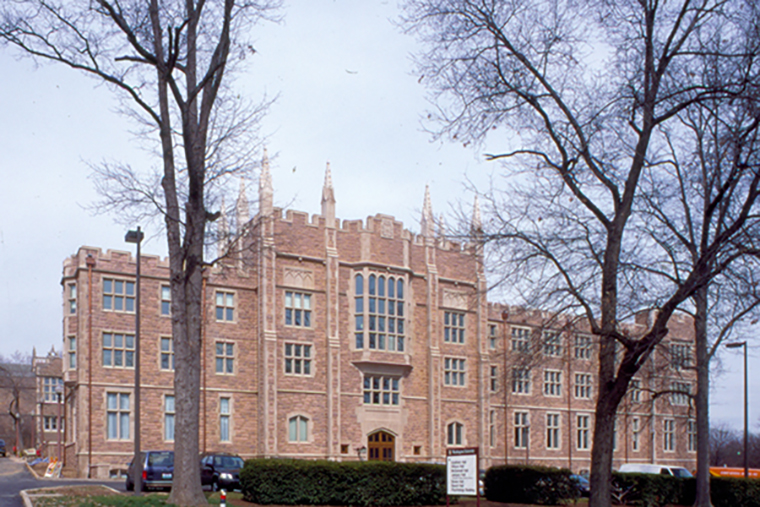
By the 1990s, the school had established major research centers, with the Kathryn M. Buder Center for American Indian Studies and the Center for Mental Health Services Research (CMHSR), the first research center funded by the National Institute of Mental Health (NIMH) in a school of social work. The Center for Social Development, directed by Michael Sherraden, the George Warren Brown Distinguished University Professor, opened in 1994. More than 30 years later, Sherraden continues to lead the CSD doing groundbreaking work in asset building and financial inclusion.
During this time, the school found itself needing more space. A donation from philanthropist Alvin S. Goldfarb, a WashU alumnus, whose late wife Jeanette Rudman Goldfarb received an MSW in 1936, made possible the much-needed construction of Goldfarb Hall, dedicated in May 1998. It doubled the school’s space and upgraded its computing faculty and technology infrastructure. The expansion continued in 2015 with Hillman Hall, thanks to a generous gift from Tom Hillman and his wife, Jennifer Miller Hillman. The state-of-the-art building further positioned the school as a leader in education, research and community engagement, marking a new era of growth and innovation.
Legacy of leadership
In 2009, the Brown School expanded its scope with a Master of Public Health (MPH) program, and in 2015, it launched the Master of Social Policy (MSP) dual-degree program, which recently became a standalone program. These initiatives reflect the school’s dedication to preparing students for the complexities of modern policymaking.
“Our journey has been one of determination and perseverance, overcoming obstacles to build a community of leaders who make a profound impact locally and globally.”
Dean Dorian Traube
Today, under the leadership of Dean Dorian Traube, the Brown School is advancing its ambitious Driving Equity 2030 Strategic Plan, which focuses on access, affordability and equity in education. A cornerstone of the plan is the goal of providing a debt-free MSW degree.
“What I can guarantee a student will get at the Brown School is a cutting-edge education from some of the best and brightest in the field,” Traube says. “The Brown School is an exceptional place with a storied history. Our journey has been one of determination and perseverance, overcoming obstacles to build a community of leaders who make a profound impact locally and globally.”
As the Brown School celebrates 100 years of transformative work, it invites you to explore its interactive timeline, test your knowledge with a celebratory quiz, and join in honoring a century of change.
